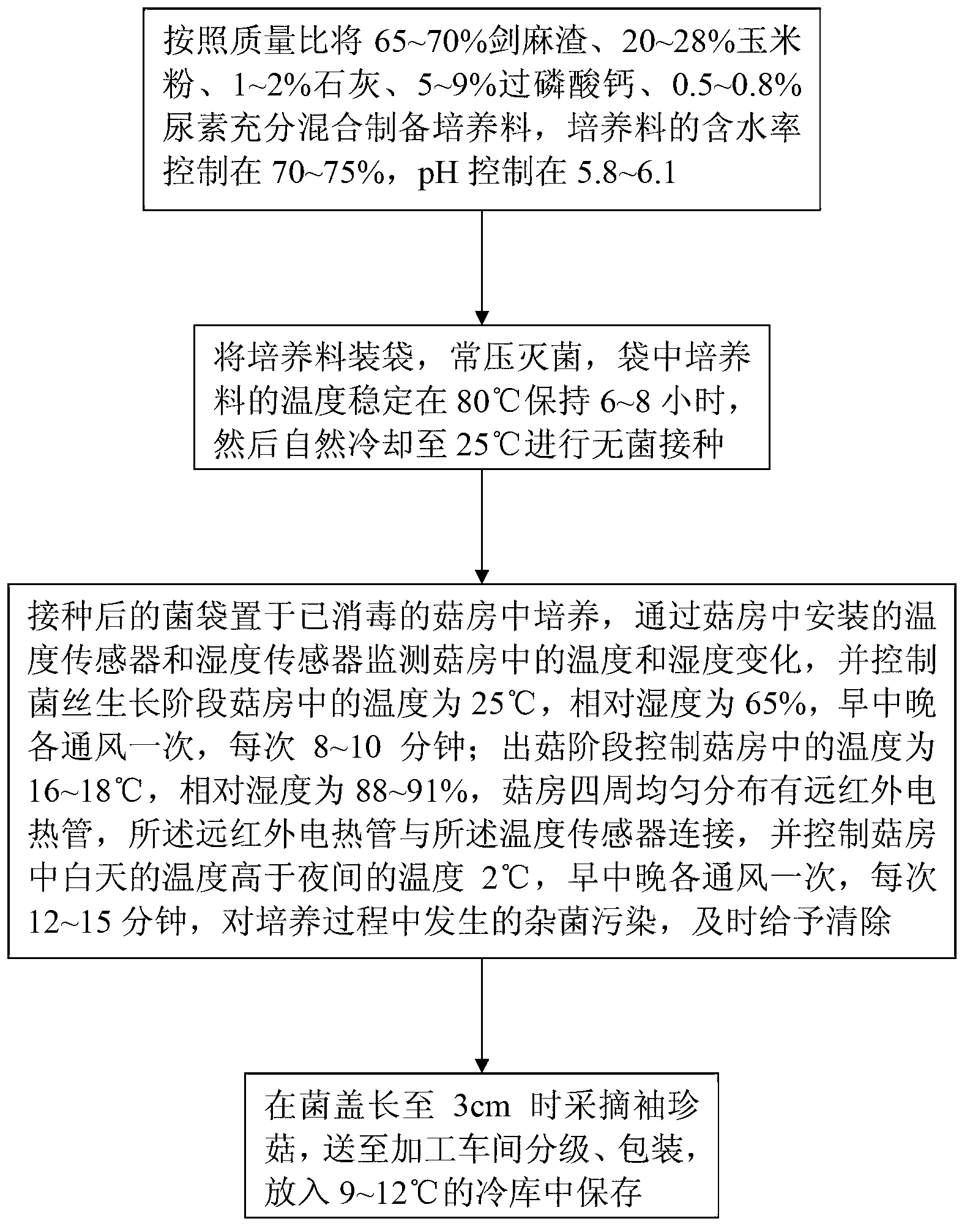Technology for cultivating pocket-size mushrooms with sisal hemp residues as raw materials
A technology of sisal residues and pocket mushrooms, applied in gardening, application, botanical equipment and methods, etc., can solve the problems of unguaranteed food safety of pocket mushrooms, affect the production enthusiasm of pocket mushroom professional households, and high raw material costs, and achieve It is convenient to obtain materials locally, reduce the cost of raw materials, and increase the temperature difference between day and night
- Summary
- Abstract
- Description
- Claims
- Application Information
AI Technical Summary
Problems solved by technology
Method used
Image
Examples
Embodiment
[0023] Step 1. Fully mix 67% sisal residue, 23% corn flour, 1.4% lime, 8% superphosphate, and 0.6% urea according to the mass ratio to prepare compost. The moisture content of the compost is controlled at 74%, and the pH is controlled at 5.9, After the compost is mixed evenly, stack and ferment for 2 days, and turn the stack every 12 hours;
[0024] Step 2, pack the compost into bags, sterilize under normal pressure, keep the temperature of the compost in the bag at 80°C for 7 hours, then cool naturally to 25°C for aseptic inoculation;
[0025] Step 3: Place the inoculated fungus bags in a sterilized mushroom house for cultivation, monitor the temperature and humidity changes in the mushroom house through the temperature sensor and humidity sensor installed in the mushroom house, and control the temperature in the mushroom house during the mycelium growth stage The temperature in the mushroom house is 25°C and the relative humidity is 65%. Ventilate once in the morning, noon a...
PUM
 Login to View More
Login to View More Abstract
Description
Claims
Application Information
 Login to View More
Login to View More - R&D
- Intellectual Property
- Life Sciences
- Materials
- Tech Scout
- Unparalleled Data Quality
- Higher Quality Content
- 60% Fewer Hallucinations
Browse by: Latest US Patents, China's latest patents, Technical Efficacy Thesaurus, Application Domain, Technology Topic, Popular Technical Reports.
© 2025 PatSnap. All rights reserved.Legal|Privacy policy|Modern Slavery Act Transparency Statement|Sitemap|About US| Contact US: help@patsnap.com

